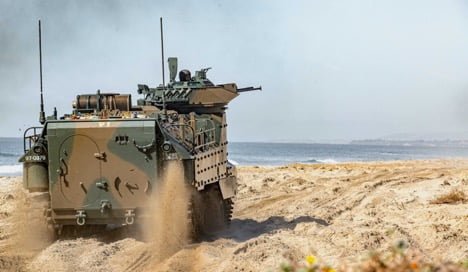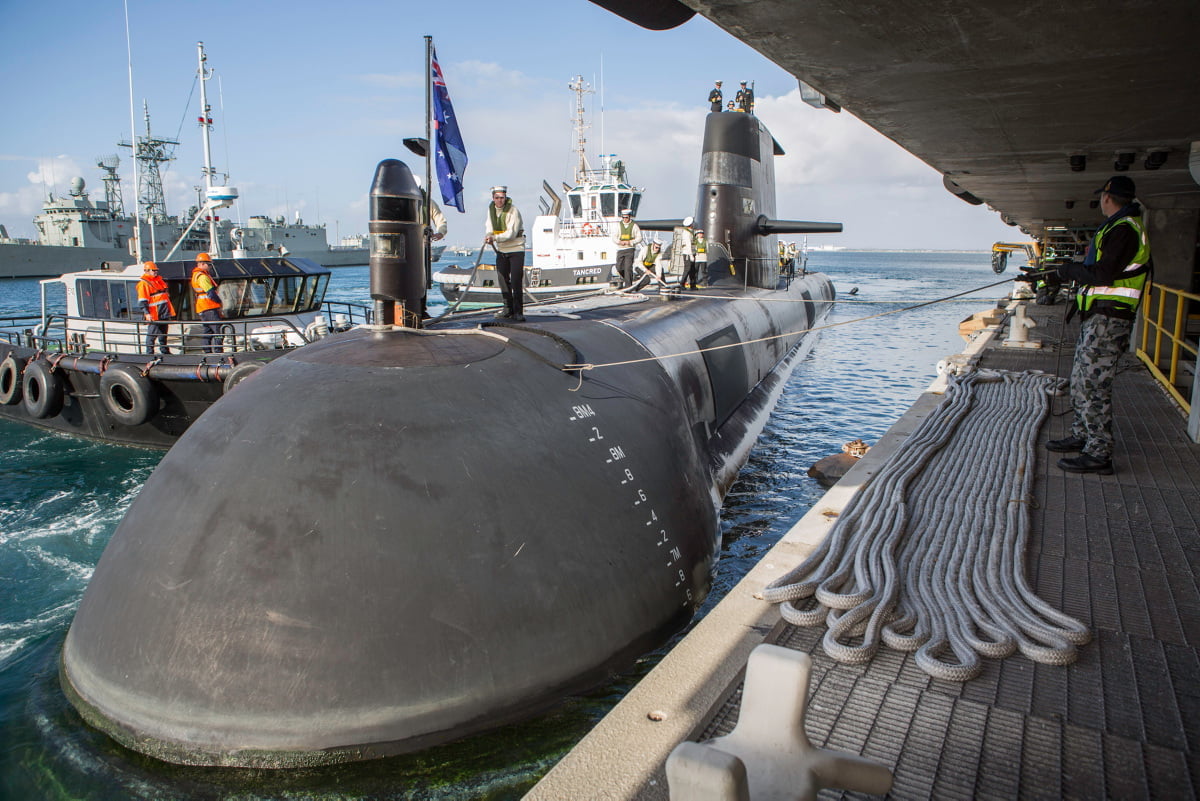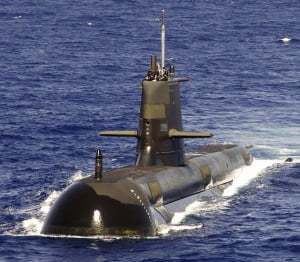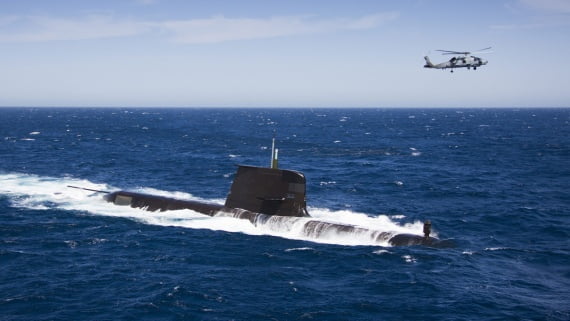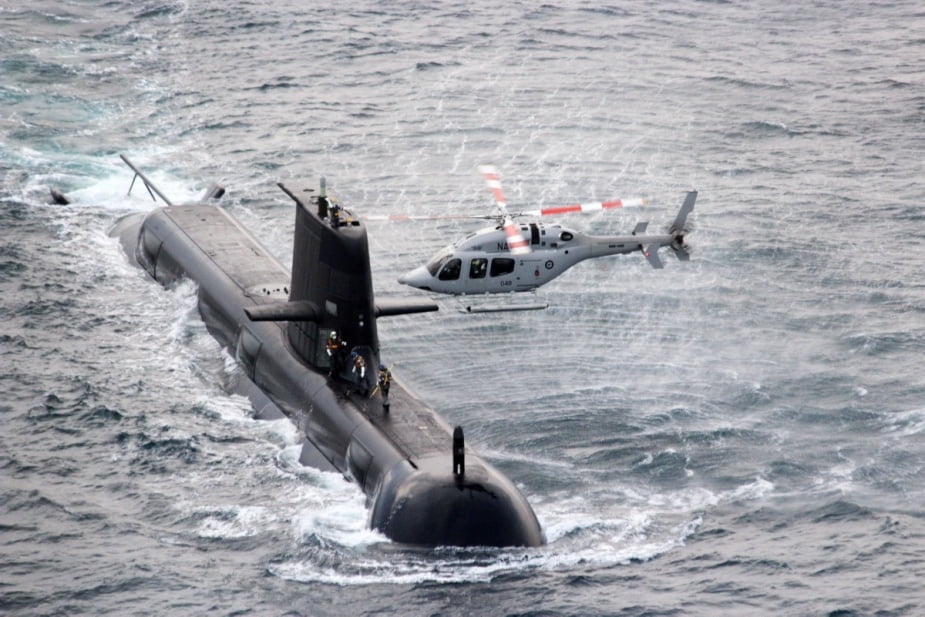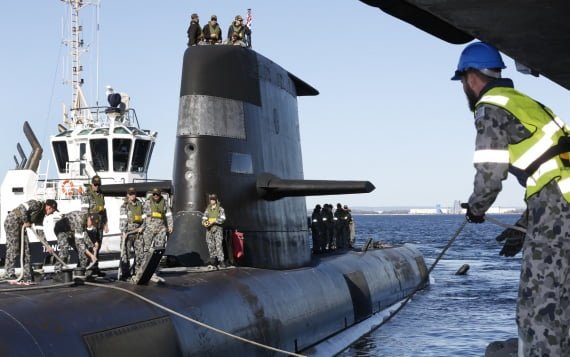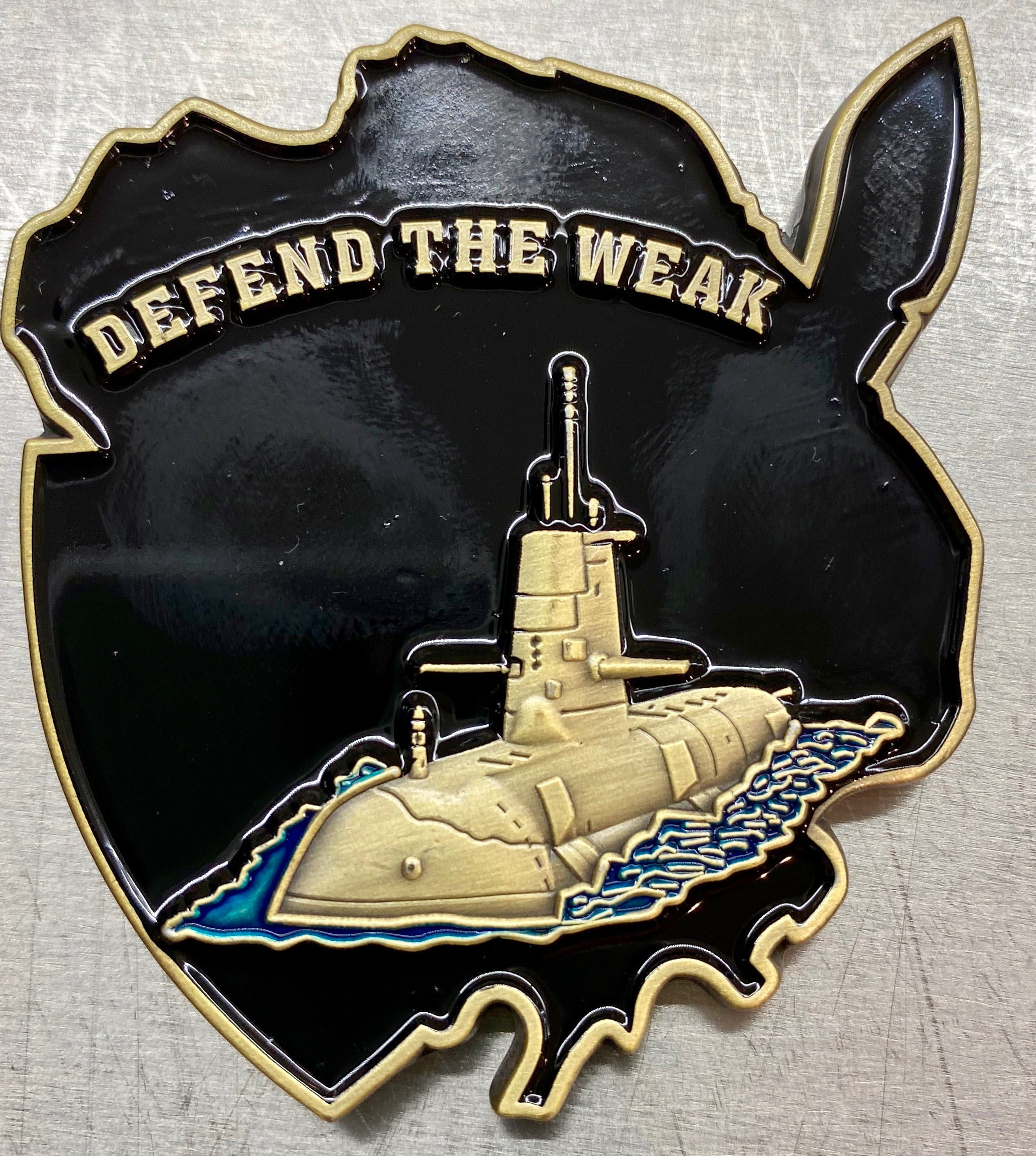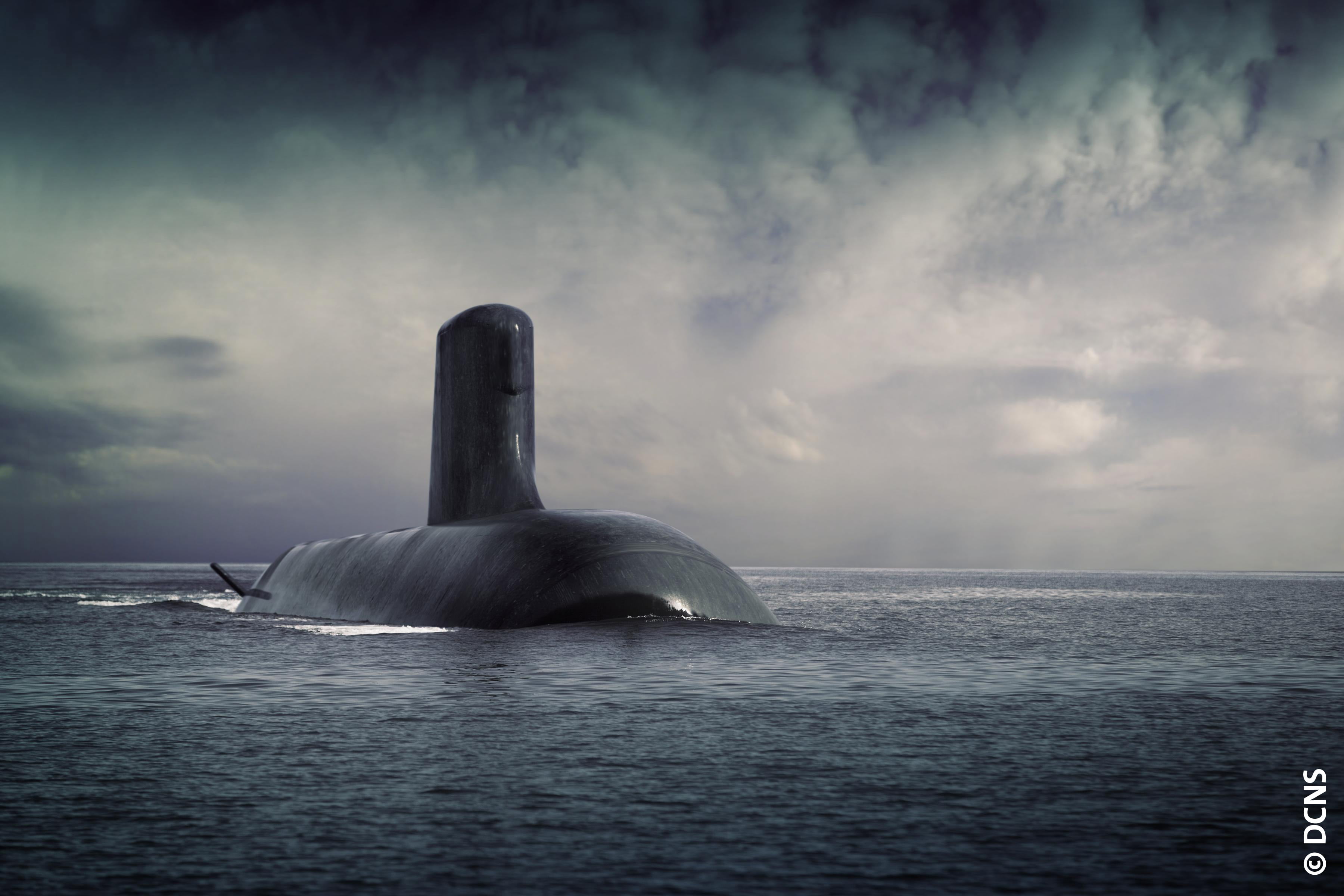By Robbin Laird
On March 12, 2020 I had a chance to visit HMAS Sterling and to visit the HMAS Rankin, one of the Collins class submarines homeported at HMAS Sterling on Garden Island. When I informed a senior U.S. Navy Admiral that I was going to visit the Royal Australian Navy at Garden Island, he wrote:
“Awesome, say hello to the fellas down south, incredible team! And absolutely critical in/out of a fight.”
That kind of joint respect can be found throughout the submarine community which the US Navy has with the Aussies, the Brits, the French and the Japanese navies. In fact, cross learning among the key navies is a key path to driving innovation as new threats are faced and new technologies provide opportunities for significant innovation.
I was privileged to have as the host one of Australia’s most experienced submariners and the CO of HMAS Rankin, CDR Robin Dainty. And that kind of mutual respect and cross learning was highlighted throughout our time together.
We discussed a wide range of issues, but I am going to focus on a core one facing the transition in the Australian submarine force: how will the “living” and “evolving” legacy of the Collins class shape the new attack submarine coming a decade out into the Royal Australian Navy?
It is important to realize that the demand side and the concepts of operations side of innovation affecting the naval forces will be very significant in the decade ahead. This will be a very innovative decade, one which I have characterized as building the distributed integrated force or the integrated distributed force.
What this means for the submarine side of the house and for ASW is working new ways to cooperate both within national navies and across the air-naval-land enterprise of the allied forces. The decade will see new ways to link up distributed assets to deliver appropriate effects at the point of interest in a crisis. It will involve working new weapon and targeting solution sets; it will see an expansion of the multi-mission responsibilities for platforms working in the distributed force.
And the Collins class will be participating in this path of innovation and lessons learned as well as technologies evolved both on the ship or the extended battlespace enabling the evolution of an integrated distributed force.
I asked CDR Dainty how he looked at this period ahead and he highlighted the importance of the innovation which Collins was going through for shaping the capabilities which the new class of submarines would be expected to continue and to extend.
He noted throughout the tour, how technology had evolved onboard the Collins class and his expectation that a considerable amount of the ship’s digital and electronic infrastructure would be refreshed on the new build submarine, but that the core competencies being demonstrated in the evolution of Collins would remain central to the new build submarine.
The evolution between platforms and systems can clearly be seen onboard Collins. The Collins which was originally procured is vastly different from the Collins class today.
A key part of this is the Australian submarine sharing common combat systems with the US Navy, and having state of the art sonar systems onboard and demonstrated skill sets by the crew in key naval combat areas.
Because the US Navy is a nuclear navy, the diesel class submarines like Collins have very complimentary capabilities to those of the US Navy. A diesel submarine like Collins can maneuver rapidly in ways a nuclear attack submarine will not. It can operate in littorals in ways a nuclear attack submarine will not.
And of course, the nuclear attack submarine’s concepts of operations being quite different from that of a diesel submarine provides complimentary capabilities to those of a diesel fleet as well.
These complimentary skills will be enhanced as the evolution of the combat systems, notably the communications capabilities, evolve and allow for greater transparency for air and sea assets to work together in distributed operations.
The collaboration with the U.S. in weapons is another key aspect of cross-learning as well. The rapid evolution of the strike weapons and the evolving capabilities to support special forces or to envisage the coming of TLAMS to the Australian navy is part of the innovation which can be anticipated in the decade ahead.
CDR Dainty highlighted throughout our discussion a wide variety of ways innovation was ongoing with regard to the Collins class and how important he saw this innovation as shaping the way ahead for the new build submarine.
The Collins class may become a legacy class with the introduction of the new build submarine; but its legacy will be a living one as the concepts of operations, the collaborative skill sets, and the combat innovations of the decade ahead shape the legacy going forward.
In effect, as the shaping and evolution of the distributed integrated force matures, the concept of a submarine wolfpack will emerge but very differently from the World War II concept. That wolfpack will include a variety of task force assets being directed at the point of concern the crisis management or combat area. And will include not simply maritime assets, but air and land assets, such as ADA as well.
The integrated distributed force is being driven initialty with a reshaping the wolfpack for the air combat force driven by fifth generation aircraft but over time will encompass the entire joint and coalition force.
CDR Robin Dainty
Robin Dainty was born in Grimsby, England in 1967. His father had previously served in the Royal Navy on Minesweepers and Submarines from 1953-1963 and it had always been Dainty’s intention to follow his father’s lead. Towards the end of his schooling, Dainty applied to join the RN as an Able Seaman.
He joined HMS RALEIGH, the recruit training school in June 1983 and whilst there applied for submarine training as a direct entry submariner. Having completed his submarine training the following year, his first posting was to HMS Hermes (Aircraft Carrier) which came as a shock to both he and his family.
Shortly afterwards he joined his first submarine, HMS Revenge (SSBN) and was awarded his Dolphins in November 1984. Promoted to Leading Seaman in 1987 and then Petty Officer in 1990, Dainty served in HMS Ocelot (SSK), HMS Torbay (SSN) and HMS Talent (SSN). Having been promoted to Chief Petty Officer in 1998 he was then selected for Commissioned Rank and joined Britannia Naval College in 1999.
Dainty returned to the submarine service after a short period in HMS Leeds Castle (FPV), enjoying periods in HMS Triumph (SSGN) and two tours in HMS Turbulent (SSGN), the first as the Navigating Officer and the second as the Operations Officer. These postings allowed him to witness the full range of submarine operations, including service during both Gulf War One and Gulf War Two.
He successfully completed Submarine Command Course (Perisher) in 2007 and then joined HMS Vengeance(SSBN) as the Executive Officer. He had the honour to Command Vengeance for a short period and Vengeance was to be his last appointment in the Royal Navy, joining the Royal Australian Navy in May 2011.
Initial service was in HMAS Dechaineux, followed by two years as the Executive Officer of HMAS Waller. He returned to HMAS Dechaineux in November 2014 as the Commanding Officer, departing her in January 2017 for an overseas posting at COMSUBPAC, Hawaii. Having returned to WA in February 2019, Dainty was selected to Command HMAS Collins.
Commander Dainty assumed command of HMAS Rankin in January 2020.
HMAS Rankin
Based at Fleet Base West in Western Australia, HMAS Rankin is the final of the six Collins class submarines to enter service in the Royal Australian Navy. These submarines are a formidable element in Australia’s defence capability.
Rankin was launched in Adelaide, South Australia by Lieutenant Commander Robert Rankin’s daughter, Ms Patricia Rankin (on behalf of her mother, Mrs Molly McLean) on 7 November 2001 and commissioned at Fleet Base West, Western Australia on 29 March 2003.
HMAS Rankin’s operational characteristics and range have been tailored specifically for its defence and two-ocean surveillance role in the Royal Australian Navy. Designed to be as quiet as advanced technology can achieve, Collins class submarines have been developed from five generations of submarines designed and built by the Swedish Navy.
One of the first submarines to be totally designed by computers, HMAS Rankin boasts a vast range of features. They include a high-performance hull form, highly automated controls, low indiscretion rates, high shock resistance, optimal noise suppression and an efficient weapons handling and discharge system.
The submarine moves silently on electric power supplied to the propulsion motor by banks of new technology lead-free batteries. The batteries are charged by three onboard diesel generator sets.
The sophisticated combat system gathers its intelligence from its sensors, computes the input and then launches and directs weapons.
Since commissioning, HMAS Rankin has successfully conducted a range of activities throughout the region in support of Australian Defence Force exercises, operations and the government’s strategic directives.
HMAS Rankin is named after Lieutenant Commander Robert William ‘Oscar’ Rankin, RAN who distinguished himself in action during World War II. He commanded the sloop HMAS Yarra (II) and was conducting convoy escort duties in the Northern Indian Ocean when attacked by a Japanese force in February 1942. Facing a far superior force of three heavy cruisers and two destroyers, Rankin gallantly positioned his ship between the Japanese and the scattering convoy vessels. Rankin fought his ship to the very last in an intense exchange. He was killed when an eight inch salvo hit the bridge shortly after passing the order to abandon ship.
HMAS Rankin’s motto “Defend The Weak” is testimony to Lieutenant Commander Rankin and Yarra’s determination to defend the unarmed convoy ships.
The featured photo: Submariners pass berthing lines as HMAS Rankin comes alongside Diamantina Pier, Fleet Base West, returning home after the submarine completed a nine month deployment.
HMAS_Rankin_datasheet
Also, see the following:
The USAF Thinks About the Wolfpack: The Renorming of Airpower


